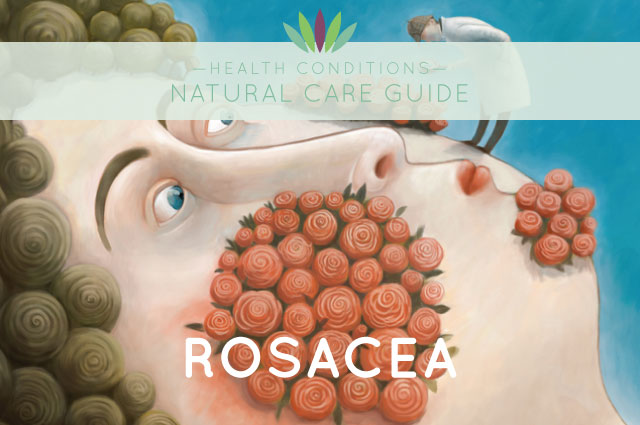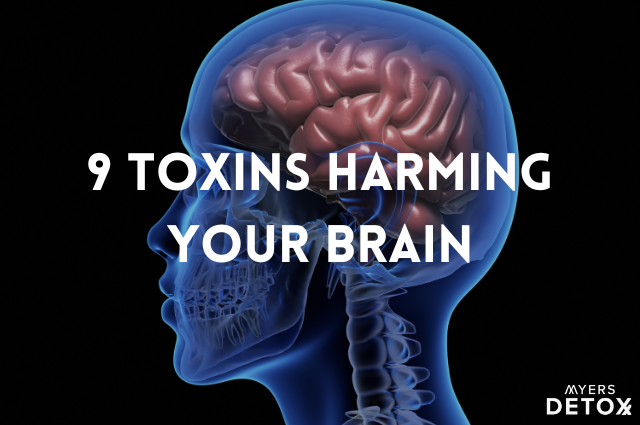While there is no cure for rosacea it absolutely can be controlled. Rosacea can be caused by infections in your intestines (abnormal gut flora), systemic inflammation, an h. pylori infection, allergies, stress, and an overactive immune system (contributing to allergies).
Treatment of rosacea is very frustrating as it has many potential underlying causes. As many complex factors contribute to rosacea, treatment is trial and error. You must restore your immune system to stop flare-ups. In order to effectively battle inflammatory based conditions, one must first recognize and eliminate food allergies and sensitivities, heal the intestinal tract, strengthen blood vessels, repair intestinal flora, reduce stress, stabilize blood sugar issues, and make intelligent use of targeted supplements.
You and your doctor must take a proactive role in trying multiple treatments to find the regimen that works for you. This will take time and education. Do not leave it up to your doctor to treat your rosacea; he is only one facet of your treatment. You should be assessed for lupus since symptoms of rosacea are similar.
Goals in Controlling Rosacea
- Promoting healthy flora in the intestines
- Reducing systemic inflammation
- Strengthening immunity
- Strengthening Blood Vessels
Avoid
You must avoid the following lifestyle factors if you want to control your rosacea:
- Alcohol, especially grain alcohol and red wine. It dilates blood vessels.
- Hot drinks. They will dilate blood vessels and cause flushing.
- Coffee dilates blood vessels.
- Spicy foods
- Greasy or fried foods
- Saunas
- Sunlight on affected areas
- Hot baths
- Strenuous exercise dilates blood vessels.
- Poor sleep. Reduced sleep will increase cortisol levels, increasing inflammation.
- All stimulants including green tea, yerba mate, sodas with caffeine, recreational drugs, diet pills, etc. Again, these dilate blood vessels.
Digestion
Poor digestion plays a major role in rosacea. When one has low stomach acidity, abnormal gut flora, and eats foods that promote these problems, undigested food particles can cause allergies, leading to flare-ups.
- Low stomach acid: Low stomach acidity can be a factor in rosacea. This contributes to poor digestion of food and dysfunctional gut bacteria, which can cause rosacea. Consider supplementing with Hcl, hydrochloric acid. Low stomach acid is a function of low phosphorus levels and adrenal fatigue. Increase phosphorus by taking Phosfood by Standard Process and heal adrenal fatigue to increase natural production over time.
- Eat bitter foods: Bitter foods increase digestion: green juice, all greens, lettuce, kale, broccoli, mushrooms, cucumbers, cabbage, melons, cauliflower, asparagus, tomatoes, olives, Dr. Bragg’s apple cider vinegar drinks, and lemon juice. Drinking ½ teaspoon of Swedish bitters in 8 oz of water before bed aids in digestion.
- Probiotics: Probiotics increase healthy flora in intestines and strengthen immunity. I have researched the best probiotics on the market that can be found in the Myers Detox Store. Learn more about the benefits of Probiotics.
- Avoid spicy foods: Eat more bland foods and limit spicy foods.
Allergies
Allergies will absolutely cause flare-ups. Many are unaware of foods to which they may be allergic and even crave foods to which they are allergic. Allergies will have a direct influence on the inflammatory response.
- Allergy testing: Blood and skin testing for IgG food allergens (www.immunolabs.com, cyrexlabs.com and other labs) can help you to identify hidden food allergies. While these tests do have limitations, they can be useful guides to what’s bothering you in particular or pinpointing uncommon food allergies. Food allergies and sensitivities can occur by 12 different means. Skin and blood testing only detect two different means of allergic responses. This makes it necessary to do an elimination diet even if you have allergy testing done, as these tests do not identify food reactions you are having in your gut. Note that food allergies can change every year. Just because you’re diagnosed with a food allergy one year does not mean it will hold true for the rest of your life.
- Common allergens: Wheat (gluten), nuts, chocolate (not raw cacao), strawberries, eggs, milk, shellfish, lamb. You must find the foods you are allergic to, as they undoubtedly cause flare-ups.
- Food sensitivities: If you don’t have allergies, you may have more subtle food sensitivities or intolerances. For more information, see my article on Food Sensitivities to ferret out food sensitivities that could be causing flare-ups and how to do an elimination diet.
Inflammation
Our current western diet contains too large a percentage of the pro-inflammatory omega-6 fatty acids in comparison to other less-inflammatory omega-6 and omega-3 fatty acids. This imbalance contributes to most of the modern world’s inflammatory problems (arthritis, heart disease, Alzheimer’s, rosacea, etc). Decreasing your intake of pro-inflammatory omega-6 fatty acids and increasing the intake of the less-inflammatory omega-6 and omega-3 fatty acids will help to reduce the inflammatory reaction.
- Eat grass-fed meats: These are much higher in omega 3 than conventionally raised meats. The animals usually eat what they are supposed to eat. The cows eat grass and the chickens eat bugs. This diet makes them rich in omega 3.
- Eat grassed organic dairy: If you are tolerant of dairy, eat organic milk, cheese, butter, sour cream, yogurt, and kefir. Just like meat, dairy cows that are raised organically and eat grasses, as opposed to soy and corn, are going to be higher in omega 3 as the grasses they eat are high in omega 3. Raw dairy is best because pasteurization kills probiotics and enzymes. You can find raw dairy at farmer’s markets. If you’re worried about bacteria, though you’re more likely to get ill from pasteurized milk, you can add a few drops of 35% food grade hydrogen peroxide. Learn more on my article Are You the Half that Should Avoid Dairy?
- Eat wild fish: Wild fish have far more omegas than farmed fish. Farmed fish have the same problems as conventional meats. They are routinely given antibiotics, fed soy and corn, and are dyed to make their flesh look healthy. Farmed fish and shrimp are to be avoided. Learn which fish are safe to eat in my Seafood Survival Guide.
- Avoid vegetables oils: Vegetable oils promote inflammation. Corn, sunflower, safflower, canola, soybean (Asian food) and any other vegetable oil are to be avoided completely. Olive oil is OK, but only raw. This also means avoiding fried foods that are fried in vegetable oil. We only began consuming these products a couple hundred years ago. Our bodies are not designed to consume them. Use cold pressed animal fats and lard for cooking as they have a high burn point.
- Eat oils that reduce inflammation: Fish oil, cod liver oil, GLA supplements, coconut oil (contains GLA), flax oil (or freshly ground flax seeds) reduce inflammation.
- Anti-inflammatory foods: turmeric, ginger, aloe, kelp, wild salmon, shiitake mushrooms, organic papaya, blueberries, olive oil, broccoli, sweet potato.
- Eat low on the glycemic index: Insulin spikes increase inflammatory markers. Eat foods low on the glycemic index. Don’t eat too much fruit, huge meals, sweets unless with a meal, drink liquids with sugar, and avoid ‘white’ foods: bread, pasta and sugar.
- Eat foods with Vitamin C: These reduce histamine release which cause inflammation and widen blood vessels: red cabbage, strawberries, bell peppers, kiwi, oranges, guava, and tangerines. You can also supplement with an amazing organic food based Vitamin C like Innate Response Vitamin C.
Diet
Many rosaceans report that diet plays a major role in their rosacea, with dietary triggers causing additional flushing, burning, and pustules. Many of the dietary sources that rosaceans list as their worst triggers have direct influences on the inflammatory response. Some of these pro-inflammatory dietary influences include:
- Histamines: Many people with rosacea find that foods that are either high in histamine or that trigger the release of histamines seem to worsen their rosacea symptoms. Included in this category are cheeses, fermented soy products, fermented foods (e.g. sauerkraut), meat (especially leftover meat), broths, alcoholic beverages, and vinegars. Sensitivity to histamines in a function of adrenal fatigue. Nourish the body and heal adrenal fatigue and you’ll find these sensitivities reduce dramatically.
- Niacin: Foods high in niacin (vitamin B3), and tryptophan, which can be converted in the body to Niacin, stimulate prostaglandin production and thus cause blood vessel dilation or flushing. Many people with rosacea find foods that are either high in niacin or high in tryptophan can worsen their rosacea symptoms. Here is a list of foods high in niacin. Here is a list of foods high in tryptophan.
- Salicylates: Many with rosacea also report varying degrees of sensitivity to salicylates, with salicylates seeming to worsen their flushing, burning and pustules. Here is a list of foods high is salicylates.
- Dairy: Dairy increases testosterone and can exacerbate rosacea. Most nonorganic dairy can have synthetic growth hormone, rBGH, raising inflammatory markers. The majority of the world does not eat dairy. Raw dairy may be ok. Experiment.
- Superfood smoothies: This is a great way to get oils and antioxidants, reduce inflammation, and strengthen immunity. Smoothie ingredients: Daily Detox, Innate Response Renewal Greens, cacao powder, bee pollen, royal jelly, propolis, maca powder, almond/hemp milk/coconut water/tea as base, coconut oil, goji berries or powder, fresh aloe gel, superfood powder, hemp protein (or other whole food protein), berries, chia seeds, camu camu berry powder, freshly ground flaxseed, nut butters, hemp seed, etc. Experiment! Never use soy protein isolate powders – you want to eat whole foods, not highly processed isolates.
- Eat foods with proanthocyanidins: These strengthen blood vessels: blueberries, raspberries, grape seed extract, pine bark extract supplement.
- Aloe vera: Use fresh plant gel on face for a couple of hours every day if possible. Fillet a large leaf. Apply a chunk of gel, put on wound, and bandage. If you just rub a little gel on your face it will dry up. Put this gel in a smoothie, too. Aloe will kill h. pylori, bacteria, and heal intestines. Test an area of your face (or half your face) for a week to see if you have a bad reaction.
- Gelatinous foods: All gel foods remove toxins and assist healing, like aloe, chia seeds and seaweeds. Put chia and aloe in smoothies. Or soak chia for 10 minutes to sprout and drink in lemonade or water. White chia (brand name Salba) are the most nutritious.
- Drink water. This cannot be stressed enough. You must drink 3 liters of water a day to stay hydrated and prevent flare-ups. Adequate water intake also reduces allergies and many other health conditions. Dehydration also leads to histamine release. See my articles Dehydration Causes Pain and Disease and What Kind of Water Should I Drink?
Treatments
- Myers Detox. A Myers Detox Protocol using hair mineral analysis is one of the best tools to heal any kind of health condition, including rosacea. This program heals the entire body, including many of the issues that contribute to rosacea, including gut dysbiosis, weak capillaries, the right diet, heavy metal and chemical toxicity and more. The program is very affordable and can reveal heavy metal toxicity and underlying mineral deficiency or imbalance that is undermining health or contributing to rosacea. This program will feed and calm your immune system to reduce or stop flareups.
- Cleansing. Use a gentle cleanser and moisturizer formulated for rosacea or sensitive skin. Absolutely avoid the common recommendation to use Cetaphil or Eucerin. It is beyond me why these toxic products are so commonly recommended. They contain propylene glycol, a skin irritant made from petroleum, three kinds of parabens proven to mimic estrogens in your body and lead to cancer, and sodium lauryl sulfate which is a skin and eye irritant that disturbs the healthy lipid barrier of the skin. Use a product that does not contain any of these ingredients and is all natural and organic.
- Antibiotics. Conventional medicines such as Azelaic acid, Erythromycin, Metronidazole, Doxycycline, Tetracycline, Isotretinoin, and Minocycline only treat the symptoms of rosacea. They do not address the fundamental causes. This only provides temporary relief and suppress symptoms. While antibiotics may improve your symptoms in the short run, they exacerbate your problem in the long run contributing to dysfunctional gut bacteria and overgrowth in your intestines. Antibiotics will reduce your overall immunity as 85% of your immune system surrounds the large intestine. Any disruption of the delicate balance of bacteria in your intestines will compromise your immunity, contributing to rosacea flare-ups.
- Corticosteroids. These cause thinning of skin, exacerbating rosacea.
- Improve lymphatic flow. Get lymph drainage massages. Foods that block lymph are dairy and high fat foods.
- Water filter. Consider a water filter on your shower to reduce toxins in the water getting on your face. There can be up to 300 different contaminants in tap water, including chlorine and fluoride. I find that many of my clients are drinking filtered water but the filter is not the right kind or does not work well – this defeats the purpose. You MUST drink properly filtered water to enjoy good health. Learn more this article, The Best Water Filter on the Market.
- Stress reduction. This is essential in combating rosacea. You want to relax as much as you can to calm your nervous system, as there is a connection with the sympathetic nervous system and rosacea. Try deep breathing exercises, massage, yoga, and meditation. Try this simple meditation.
- Lose weight. Extra weight increases hormone activity and may affect rosacea. Learn about Weight Loss.
Supplements
- Probiotics. Invariably, people with skin problems have dysfunctional bacteria in their intestinal tract, including yeast and bacterial overgrowth. See Gaps and Psychology Syndrome by Campbell-McBride. I carry my favorite probiotics in the Myers Detox Store.
- GB-3. GB-3 is the best digestive aid I have ever found. Most people today have some degree of intestinal dysbiosis. This means they harbor intestinal infections, yeasts including Candida Albicans, parasites and other flora or micro-organisms in the intestines that are not ideal. GB-3 will help kill many of these pathogens that contribute to rosacea. GB-3 can be found in the Myers Detox Store.
- Zinc. Strengthens blood vessels and is required for skin health. An amazing chelated form of zinc extracted from livers (food-based) is available in the Myers Detox Store.
- Coconut oil. Take 4, 4mg supplements a day or eat three tablespoons daily. It’s delicious! Use as a moisturizer, avoiding fine pores of the face and scalp since it may clog pores. The oil will absorb into your skin to be used by the body. It’s my favorite moisturizer! Artisana and Barlean’s are great brands.
 Manuka honey. Manuka honey is antibacterial and antifungal. It can be used topically and internally. Take 3 tablespoons a day and put on face for 1-2 hours every night. Test an area of your face for a week before applying to whole face. Honey must say UMF or Molan Gold Standard on the label to be guaranteed effective medicinally. Try to get 15+ or stronger for the strongest antibacterial effect. My favorite: Manuka Health MGO 400.
Manuka honey. Manuka honey is antibacterial and antifungal. It can be used topically and internally. Take 3 tablespoons a day and put on face for 1-2 hours every night. Test an area of your face for a week before applying to whole face. Honey must say UMF or Molan Gold Standard on the label to be guaranteed effective medicinally. Try to get 15+ or stronger for the strongest antibacterial effect. My favorite: Manuka Health MGO 400.
Recommended Natural Topicals
- Essential Oils. I really like DoTerra Essential Oils. Readers have told me that Helichrysum cleared up their rough red patches, DoTerra ClearSkin blend is great applied morning and night topically to affected areas. Other good ones are Frankincense and sandalwood. Helichrysum and frankincense have antibacterial qualities and helps with scaring.
- Golden Chamomile cream: strengthens capillaries
- Green tea cream: reduces red bumps and pustules
- Niacinamide Cream: strengthens the outer layer of skin and reduces inflammation
Recommended Websites
- Natural News.com article on rosacea.
- Meditation
- Manuka Honey
- Rosacea Support Group
- Causes
- Laser therapy
- Treatments
- Rosacea diet
- Inflammation
Recommended Reading
- Gut and Psychology Syndrome by Campbell-McBride
- The Blood Pressure Hoax by Sherry Rogers
- Acne and Rosacea The Complete Guide
- Rosacea Diagnosis and Management
- Rosacea, Your Self Help Guide
- Rosacea 101: Includes the Rosacea Diet
- Joy-Full, Holistic Remedies
- Don’t Go to the Cosmetics Counter Without Me
Has this blog helped you battle your Rosacea? Anything I left out that you’d like to add? Do you have a story about your Rosacea? I’d love to hear about it! Tell me your story by leaving a comment below.










